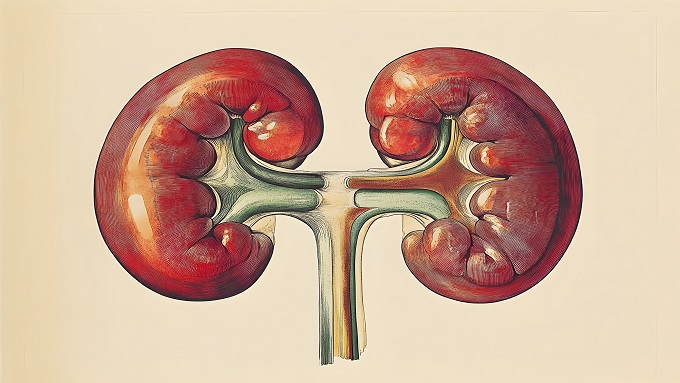INSULIN THERAPY IN T2DM PATIENTS IN DIABETES OUTPATIENT CLINIC, DR. SOETOMO GENERAL ACADEMIC HOSPITAL, SURABAYA, INDONESIA

Downloads
Highlights
1. The occurrence of macrovascular and microvascular problems is strongly associated with high mortality in type 2 diabetes mellitus (T2DM).
2. Combinations of rapid-acting and long-acting insulin were the most frequent kind of insulin.
Abstract
Background: High mortality in type 2 diabetes mellitus (T2DM) has a strong correlation with the presence of macrovascular and microvascular complications. The risk of these complications can be reduced through good glycemic control. As the disease progresses, patients may need to add or switch to insulin therapy rather than oral antihyperglycemic drugs to achieve desirable glycemic control. Objective: To determine the pattern of insulin therapy and glycemic control in T2DM patients. Material and Method: Data for this study were obtained from the medical records of the Diabetes Outpatient Clinic at the Dr. Soetomo General Academic Hospital, Surabaya, Indonesia. This study was an observational descriptive. In June-July 2016, total samples were collected from 124 patients who received insulin therapy between February 2015 and March 2015. Result: According to the data obtained, the most commonly used insulin was a combination of rapid-acting and long-acting insulin (75.8%). While basal bolus insulin (75.8%) accounts for the most common regimen used to administer insulin, only 27.4% and 45% of total patients achieved good glycemic control based on FPG and PPG testing, respectively. HbA1c testing was done on 44 out of 124 people, with 9 people (20.5%) met the target of HbA1c <7%. Conclusion: Glycemic control in T2DM patients who received insulin therapy was relatively low.
Ahmad, A., Othman, I., Zai, A.Z.M., Chowdhury, E.H. 2014. Recent advances in insulin therapy for diabetes. International Journal of Diabetes and Clinical Research: 1–10.
Ahmad, N. S., Islahudin, F., Paraidathathu, T. 2014. Factors associated with good glycemic control among patients with type 2 diabetes mellitus. Journal of Diabetes Investigation, 5(5): 563–569. doi: 10.1111/jdi.12175.
Alkaff, FF., Illavi, F., Salamah, S., Setiyawati, W., Ramadhani, R., Purwantini, E., Tahapary, DL. 2021, 'The impact of the Indonesian chronic disease management program (PROLANIS) on metabolic control and renal function of type 2 diabetes mellitus patients in primary care setting. Journal of primary care & community health, 12. doi: 10.1177/2150132720984409.
American Diabetes Association. 2016. Standards of medical care in diabetes”2016 Abridged for primary care providers. Clinical Diabetes, 34(1): 3–21. doi: 10.2337/diaclin.34.1.3.
Asif, M. 2014. The prevention and control the type-2 diabetes by changing lifestyle and dietary pattern. Journal of Education and Health Promotion, 3(1): 1. doi: 10.4103/2277-9531.127541.
Bodhe, C., Jankar, D., Bhutada, T., Patwardhan, M., Patwardhan, V. 2012. HbA1c: Predictor of dyslipidemia and atherogenicity in diabetes mellitus. International Journal of Basic Medical Sciences and Pharmacy (IJBMSP), 2(1).
Chawla, A., Chawla, R., Jaggi, S. 2016. Microvasular and macrovascular complications in diabetes mellitus: Distinct or continuum?. Indian Journal of Endocrinology and Metabolism, 20(4): 546. doi: 10.4103/2230-8210.183480.
Davies, M. J., D'Alessio, D., Fradkin, J., Kernan, W.N., Mathieu, C., et al. 2018. Management of hyperglycemia in type 2 diabetes, 2018. A consensus report by the American Diabetes Association (ADA) and the European Association for the Study of Diabetes (EASD). Diabetes Care, 41(12): 2669–2701. doi: 10.2337/dci18-0033.
Galicia-Garcia, U., Benito-Vicente, A., Jebari, S., Larrea-Sebal, A., Siddiqi, H., et al. 2020. Pathophysiology of type 2 diabetes mellitus. International Journal of Molecular Sciences, 21(17): 6275. doi: 10.3390/ijms21176275.
Hamaty, M. 2011. Insulin treatment for type 2 diabetes: When to start, which to use. Cleveland Clinic Journal of Medicine, 78(5): 332–342. doi: 10.3949/ccjm.78a.10051.
Hershon, K. S., Hirsch, B. R., Odugbesan, O. 2019. Importance of postprandial glucose in relation to A1C and cardiovascular disease. Clinical Diabetes, 37(3): 250–259. doi: 10.2337/cd18-0040.
Inzucchi, S. E., Bergenstal, R., Buse, J., Diamant, M., Ferrannini, E., et al. 2012. Management of hyperglycemia in type 2 diabetes: A patient-centered approach. Diabetes Care, 35(6): 1364–1379. doi: 10.2337/dc12-0413.
Kartika, I. G. A. ., Lestari, A. A., Swastini, D. 2013. Perbandingan profil penggunaan terapi kombinasi insulin pada pasien diabetes melitus tipe 2 di Unit Rawat Inap Rumah Sakit Umum Pusat (Rsup) Sanglah. Jurnal Farmasi Udayana: 62–69.
Ketema, E. B., Kibret, K. T. 2015. Correlation of fasting and postprandial plasma glucose with HbA1c in assessing glycemic control; systematic review and meta-analysis. Archives of Public Health, 73(1): 43. doi: 10.1186/s13690-015-0088-6.
Khan, M. A. B., Hashim, M., King, J.K., Govender, R.D., Mustafa, H., et al. 2019. Epidemiology of type 2 diabetes – Global burden of disease and forecasted trends. Journal of Epidemiology and Global Health, 10(1): 107. doi: 10.2991/jegh.k.191028.001.
Kidwai, S. S., Nageen, A., Bashir, F., Ara, J. 2020. HbA1c – A predictor of dyslipidemia in type 2 Diabetes Mellitus. Pakistan Journal of Medical Sciences, 36(6). doi: 10.12669/pjms.36.6.2000.
Quigley, M., Earnest, A., Szwarcbard, N., Wischer, N., Andrikopoulos, S., et al. 2022. Exploring HbA1c variation between Australian diabetes centres: The impact of centre-level and patient-level factors. PLOS ONE. Edited by S. D. Proctor, 17(2): e0263511. doi: 10.1371/journal.pone.0263511.
Schnell, O., Crocker, J. B., Weng, J. 2017. Impact of HbA1c testing at point of care on diabetes management. Journal of Diabetes Science and Technology, 11(3): 611–617. doi: 10.1177/1932296816678263.
Shita, N. G., Iyasu, A. S. 2022. Glycemic control and its associated factors in type 2 diabetes patients at Felege Hiwot and Debre Markos Referral Hospitals. Scientific Reports, 12(1): 9459. doi: 10.1038/s41598-022-13673-5.
Sia, H.-K., Kor, C., Tu, S., Liao, P., Wang, J.Y. 2021. Self-monitoring of blood glucose in association with glycemic control in newly diagnosed non-insulin-treated diabetes patients: a retrospective cohort study. Scientific Reports, 11(1): 1176. doi: 10.1038/s41598-021-81024-x.
Silver, B., Ramaiya, K., Andrew, S., Fredrick, O., Bajaj, S., et al. 2018. EADSG guidelines: Insulin therapy in diabetes. Diabetes Therapy, 9(2): 449–492. doi: 10.1007/s13300-018-0384-6.
Yavuz, D., Ozcan, S., Deyneli, O. 2015. Adherence to insulin treatment in insulin-naïve type 2 diabetic patients initiated on different insulin regimens. Patient Preference and Adherence: 1225. doi: 10.2147/PPA.S87935.
Copyright (c) 2023 Adinda Ayu Dyah Rahadini, Sri Murtini, Sidarti Soehita

This work is licensed under a Creative Commons Attribution 4.0 International License.
1. The journal allows the author(s) to hold the copyright of the article without restrictions.
2. The journal allows the author(s) to retain publishing rights without restrictions.
3. The legal formal aspect of journal publication accessibility refers to Creative Commons Attribution 4.0 International License (CC-BY).
































